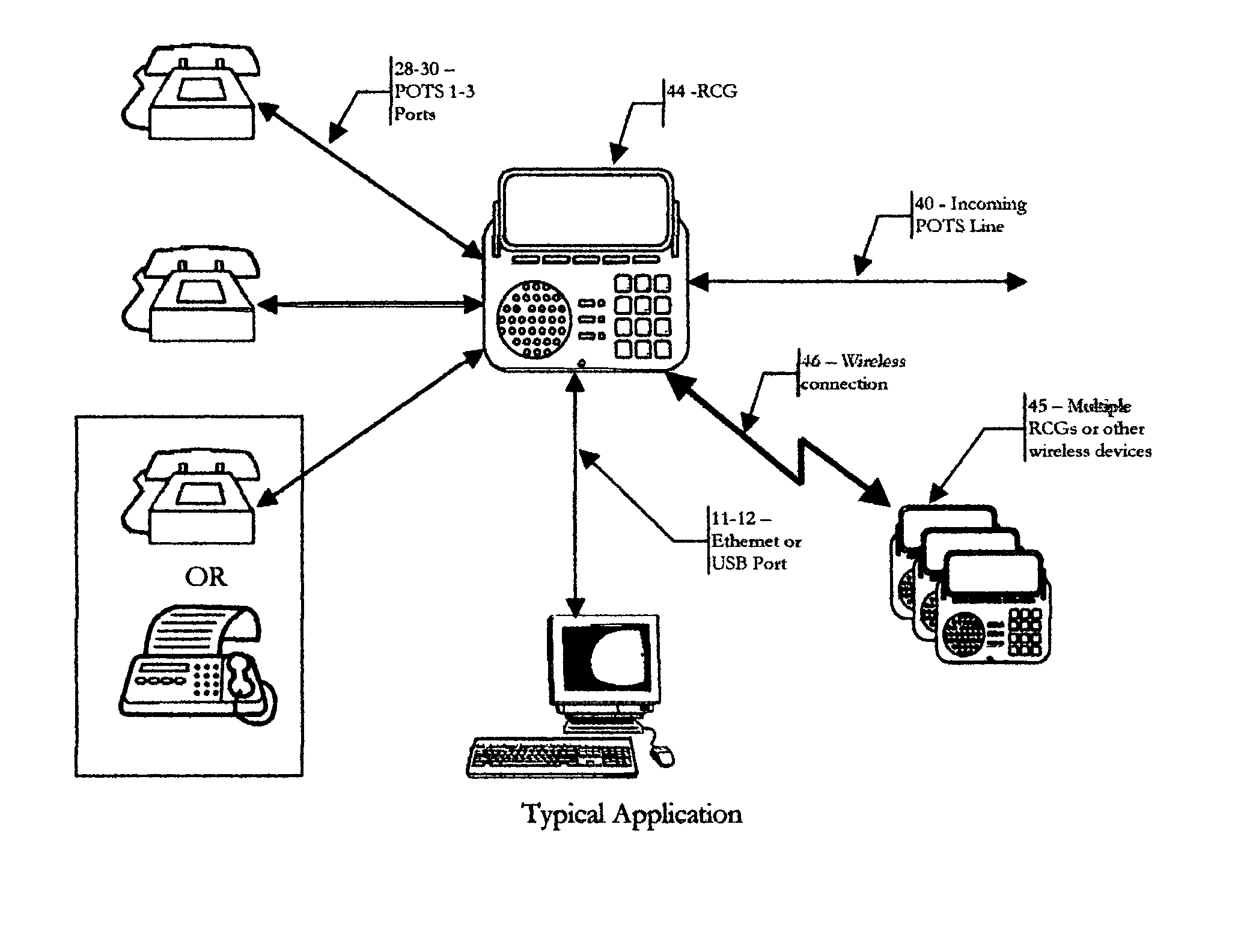Residential communications gateway (RCG) for broadband communications over a plurality of standard POTS lines, with dynamic allocation of said bandwidth, that requires no additional equipment or modifications to the associated class 5 offices or the PSTN at large
a communications gateway and broadband technology, applied in the field of residential communications gateways, can solve the problems of high-speed services, high-bandwidth data services, and high-cost infrastructure enhancements to local telephone companies' facilities and cable plants, and achieve the effects of low cost, rapid deployment, and rapid expansion of clecs customer bas
- Summary
- Abstract
- Description
- Claims
- Application Information
AI Technical Summary
Benefits of technology
Problems solved by technology
Method used
Image
Examples
Embodiment Construction
[0044] The preferred embodiment is detailed herein using the ubiquitous 802.11 wireless protocol. It is by no means insinuated that this is the only wireless scheme that can be used by this device; rather, it is intended that any wireless transmission scheme can be used for wireless communications between this device and other wireless devices as various applications may dictate.
[0045] System Initialization:
[0046] Refer to FIGS. 1, 2 and 3 for the following discussion. When the RCG is first plugged into an AC power outlet the Main CPU 19, performs a Power-on Self Test (POST) routine. Once the POST completes and the RCG is connected to an active POTS line, connected to the LEC, by means of the Incoming POTS Port 40, the RCG automatically initiates a modem connection via the Modem / DAA 41, to a registration service via a toll free 800 telephone number. The registration service connects directly to the service provider's sales or customer service offices via a VoIP connection. An oper...
PUM
 Login to View More
Login to View More Abstract
Description
Claims
Application Information
 Login to View More
Login to View More - R&D
- Intellectual Property
- Life Sciences
- Materials
- Tech Scout
- Unparalleled Data Quality
- Higher Quality Content
- 60% Fewer Hallucinations
Browse by: Latest US Patents, China's latest patents, Technical Efficacy Thesaurus, Application Domain, Technology Topic, Popular Technical Reports.
© 2025 PatSnap. All rights reserved.Legal|Privacy policy|Modern Slavery Act Transparency Statement|Sitemap|About US| Contact US: help@patsnap.com



